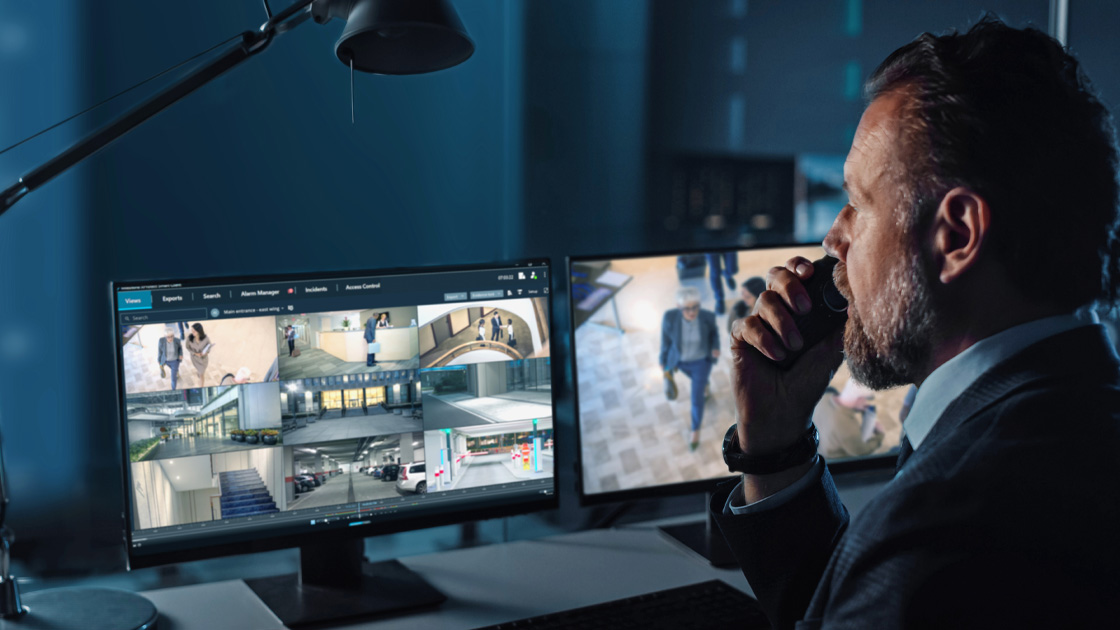June 10, 2020
Imagine if your IT environment at the office required your mouse, keyboard, laptop, screens and printers to be of the same brand and supplied by only one vendor to work together. Your HP laptop wouldn´t connect to the wifi because the access point is made and sold by Dell.
How would it be if your entire IT solution had to be bought from one single vendor in order to work? You would be forced to use the software stack provided by that vendor only. You would not be able to walk into the nearest home electronics store and buy that favorite keyboard, but rather be stuck with the solution provided by your single vendor. Unthinkable!
In the IT industry, is there really a single vendor that can provide a full end-to-end unified solution that meets every need and which components have all the features and functionalities required?
The simple answer is no, because user needs vary and change over time and no single vendor has the range, competency or resources to support “everything”. This is the reason why “best-of-breed” solutions exist. Take for example your Windows PC which is a part of an open platform solution , where the OS is the very open platform that allows you to browse marketplaces and install third party software in order to have a solution that fits YOUR needs, instead of being forced to use only the software provided by Microsoft.
The IT industry has matured into a user-oriented space where system integrators and vendors provide solution focused offerings, consisting of a vast range of best-of-breed products and services which together form the ideal solution for a particular client, solving either a single or multiple challenge.
With this in mind, why are so many integrators in the security industry then still challenged by providing and adopting a more “IT approach” to security systems – and why are some vendors so keen on pushing their “unified” end-to-end solutions?
I believe part of the answer lies in the solution stack and financials of the so-called end-to-end solutions who focus more on short term revenue maximization rather than the optimal solution for the end-user.
Let me elaborate a bit:
In the IT industry, is there really a single vendor that can provide a full end-to-end unified solution that meets every need and which components have all the features and functionalities required?
The simple answer is no, because user needs vary and change over time and no single vendor has the range, competency or resources to support “everything”. This is the reason why “best-of-breed” solutions exist. Take for example your Windows PC which is a part of an open platform solution , where the OS is the very open platform that allows you to browse marketplaces and install third party software in order to have a solution that fits YOUR needs, instead of being forced to use only the software provided by Microsoft.
The IT industry has matured into a user-oriented space where system integrators and vendors provide solution focused offerings, consisting of a vast range of best-of-breed products and services which together form the ideal solution for a particular client, solving either a single or multiple challenge.
With this in mind, why are so many integrators in the security industry then still challenged by providing and adopting a more “IT approach” to security systems – and why are some vendors so keen on pushing their “unified” end-to-end solutions?
I believe part of the answer lies in the solution stack and financials of the so-called end-to-end solutions who focus more on short term revenue maximization rather than the optimal solution for the end-user.
Let me elaborate a bit:
The definitions of proprietary and end-to-end solutions versus true open platform versions mainly differ in who makes the solution components. An open platform solution is mostly comprised of products from multiple vendors, where each business individually monetizes on its part of the solution and a system integrator puts the solution together.
An end-to-end solution usually comes from one single vendor where this business monetizes on more or less the full solution stack. Therefore, it´s likely to assume that the end-to-end providers are more interested in maximizing revenue per customer rather than giving the customer a “freedom of choice” solution that caters to the exact needs of each individual customer.
An end-to-end solution usually comes from one single vendor where this business monetizes on more or less the full solution stack. Therefore, it´s likely to assume that the end-to-end providers are more interested in maximizing revenue per customer rather than giving the customer a “freedom of choice” solution that caters to the exact needs of each individual customer.
So, are end-to-end solutions really that bad?
I would like to clarify that many of the end-to-end solutions on the market today work just fine and fulfill a defined need of the end user at that moment in time. The challenge lies in the future flexibility and adaptability of the solution.
A recent example is the current crisis of COVID-19 where hundreds if not thousands of businesses right now are looking at re-purposing their cameras in order to add new functionalities, including different kinds of purpose built analytics such as mask-detection, distance measurement between people, crowd counting and more.
While an end-to-end solution will struggle to provide these new and very niche features in a sufficient timeframe, the open platform can easily add a building block of analytics to an existing solution by leveraging existing or new technology partners who specialize on these new technologies.
What are your thoughts? I’d love to discuss this topic with other experts in the industry.
https://www.linkedin.com/in/cakesson/
A recent example is the current crisis of COVID-19 where hundreds if not thousands of businesses right now are looking at re-purposing their cameras in order to add new functionalities, including different kinds of purpose built analytics such as mask-detection, distance measurement between people, crowd counting and more.
While an end-to-end solution will struggle to provide these new and very niche features in a sufficient timeframe, the open platform can easily add a building block of analytics to an existing solution by leveraging existing or new technology partners who specialize on these new technologies.
What are your thoughts? I’d love to discuss this topic with other experts in the industry.
https://www.linkedin.com/in/cakesson/
Christopher Åkesson
Sales Manager, Nordic
Ready to see what we have to offer with smart video technology?
Book a demo


